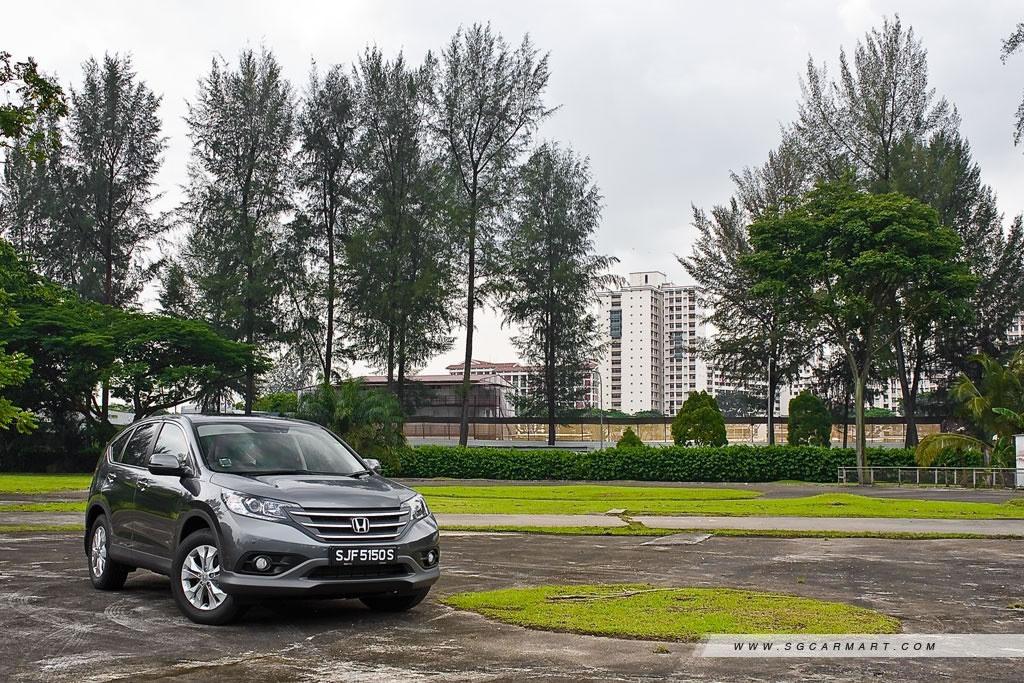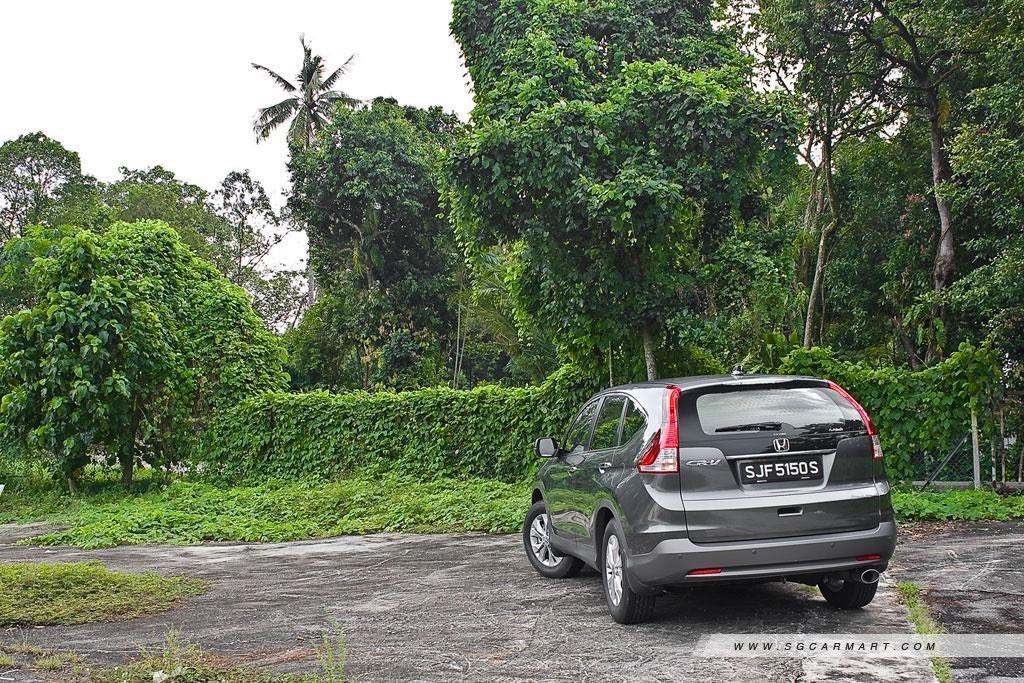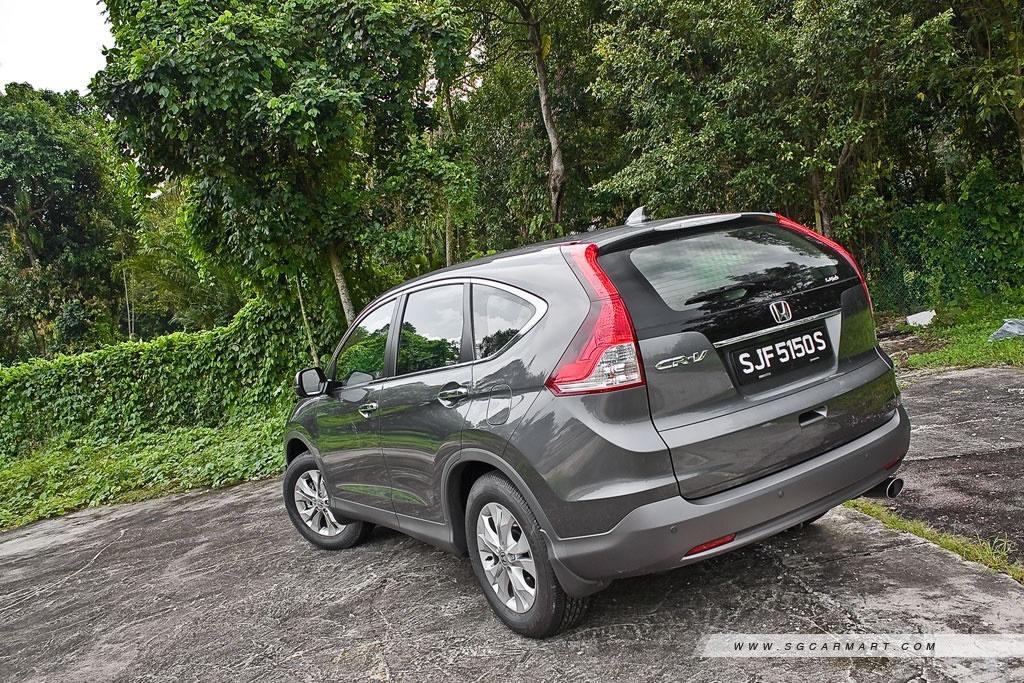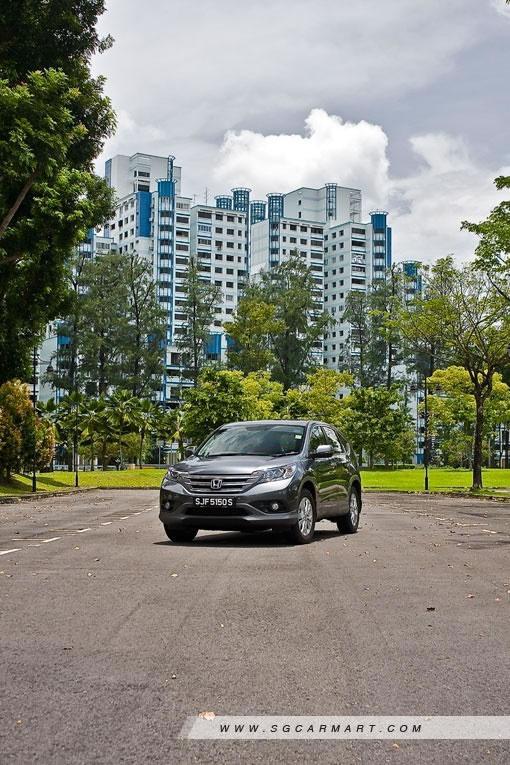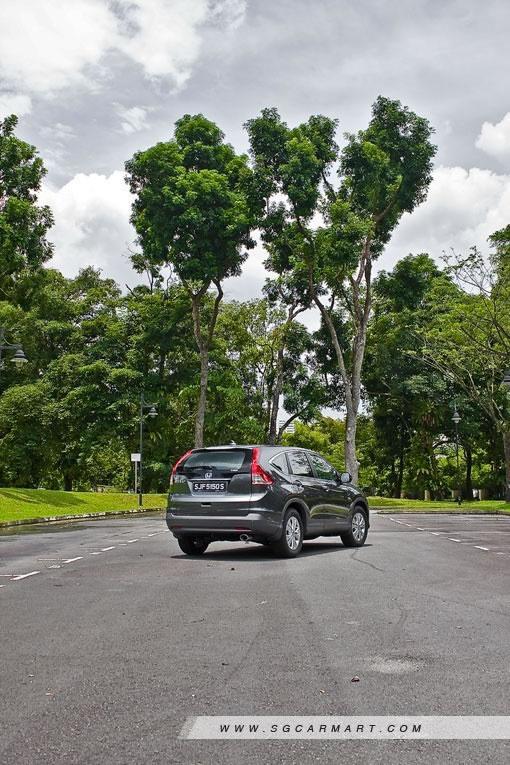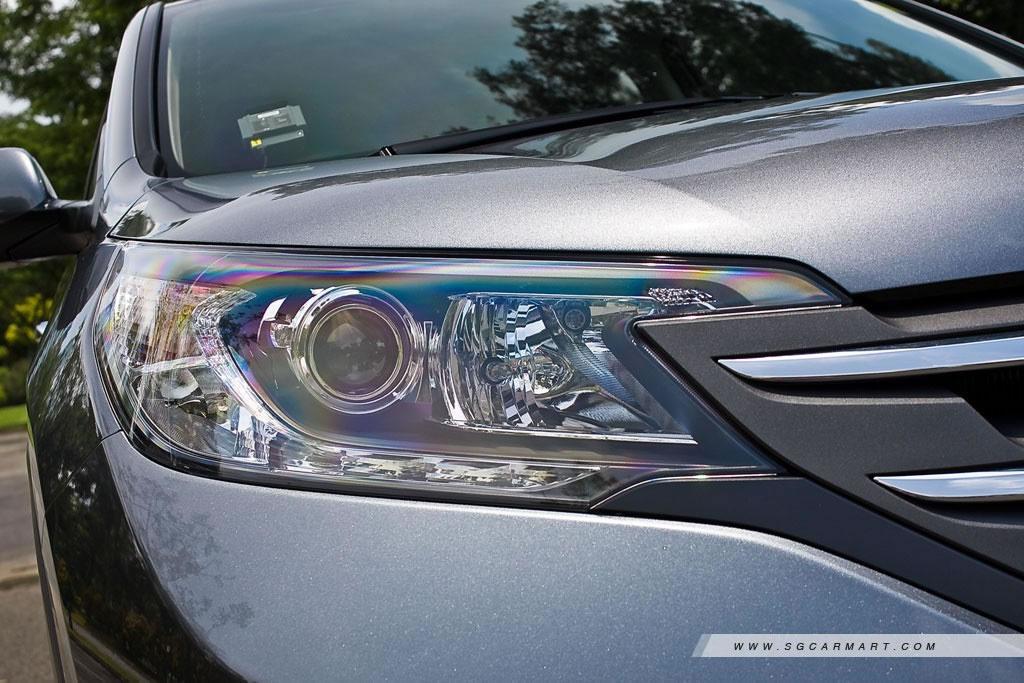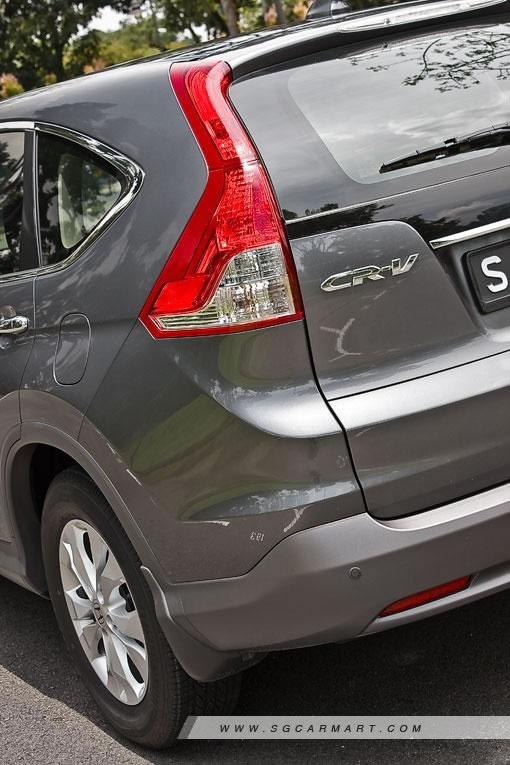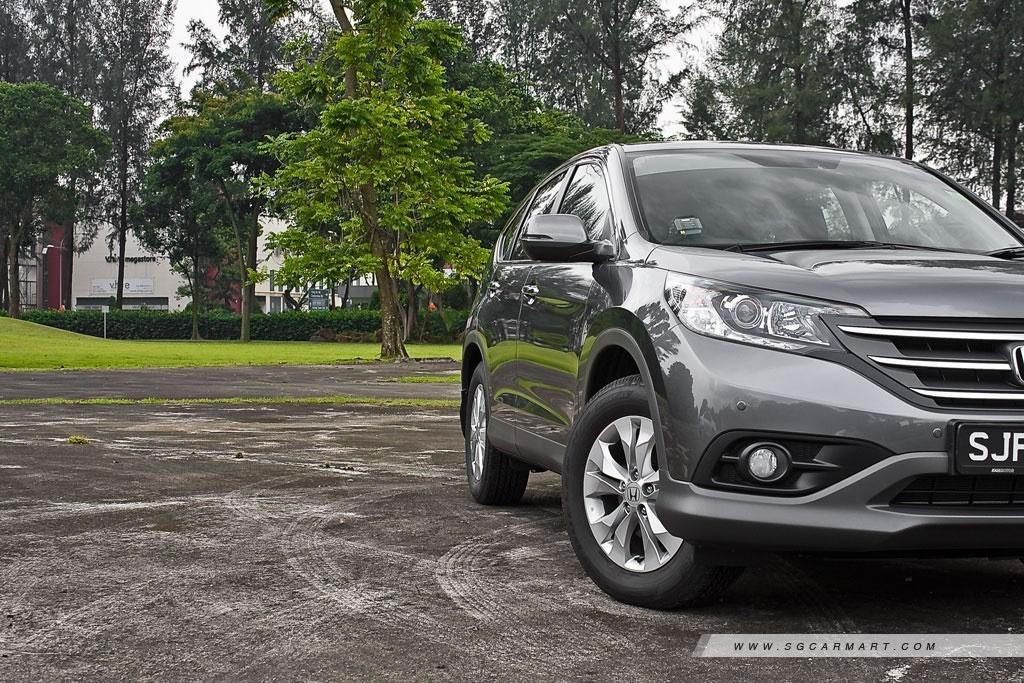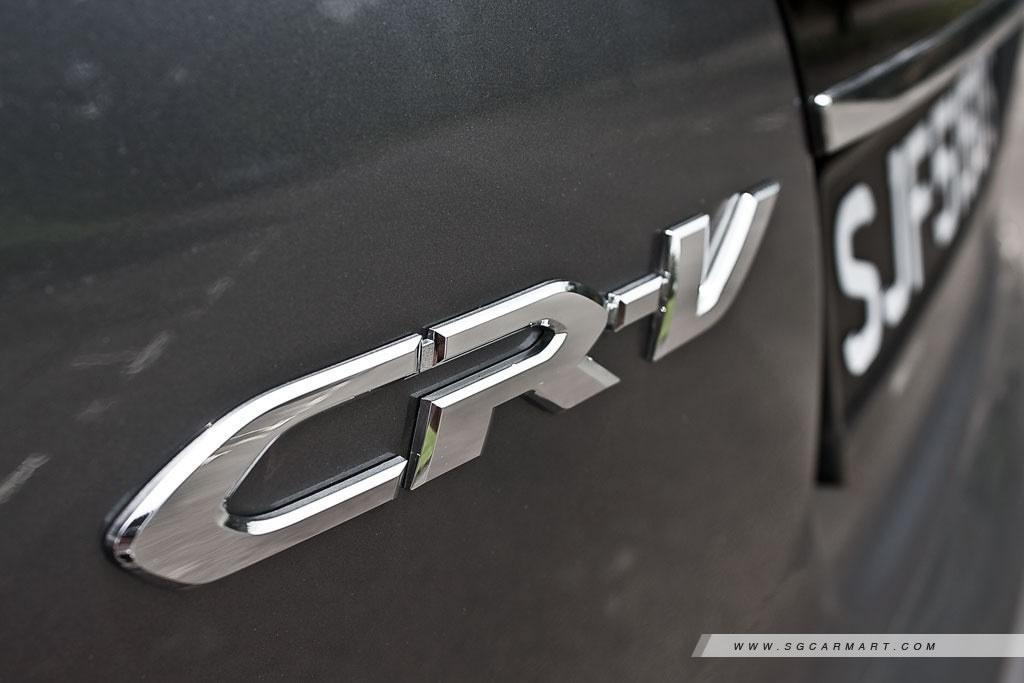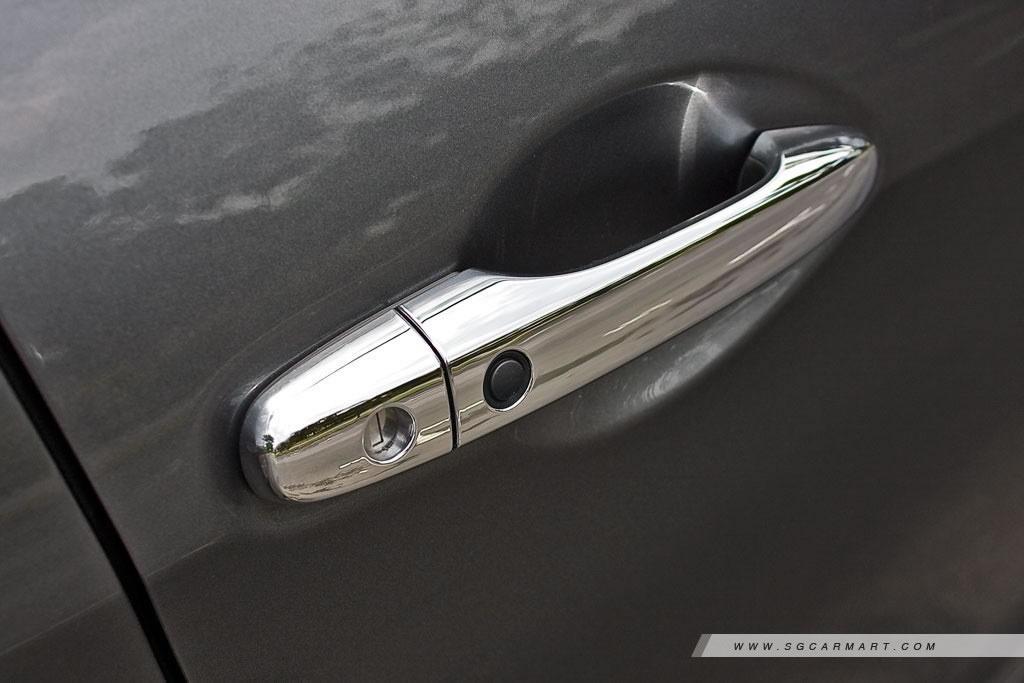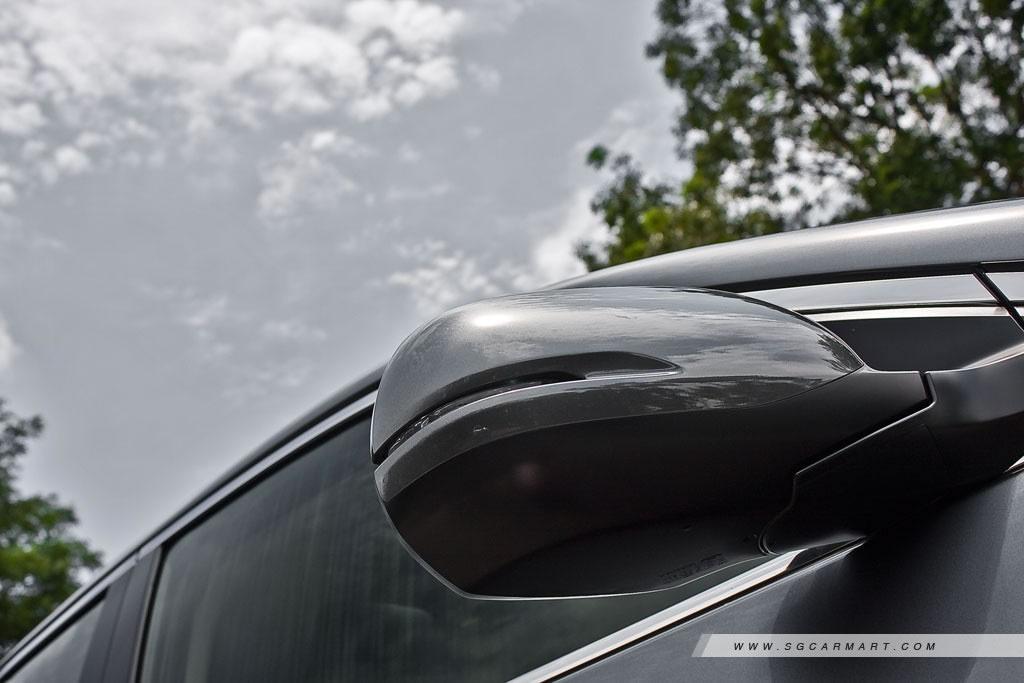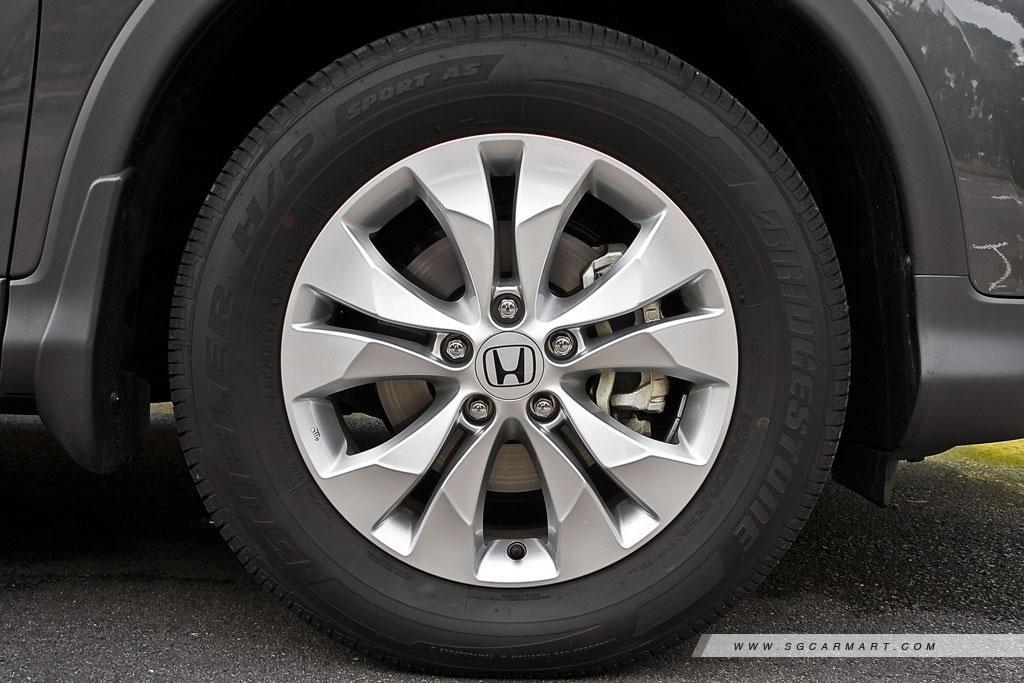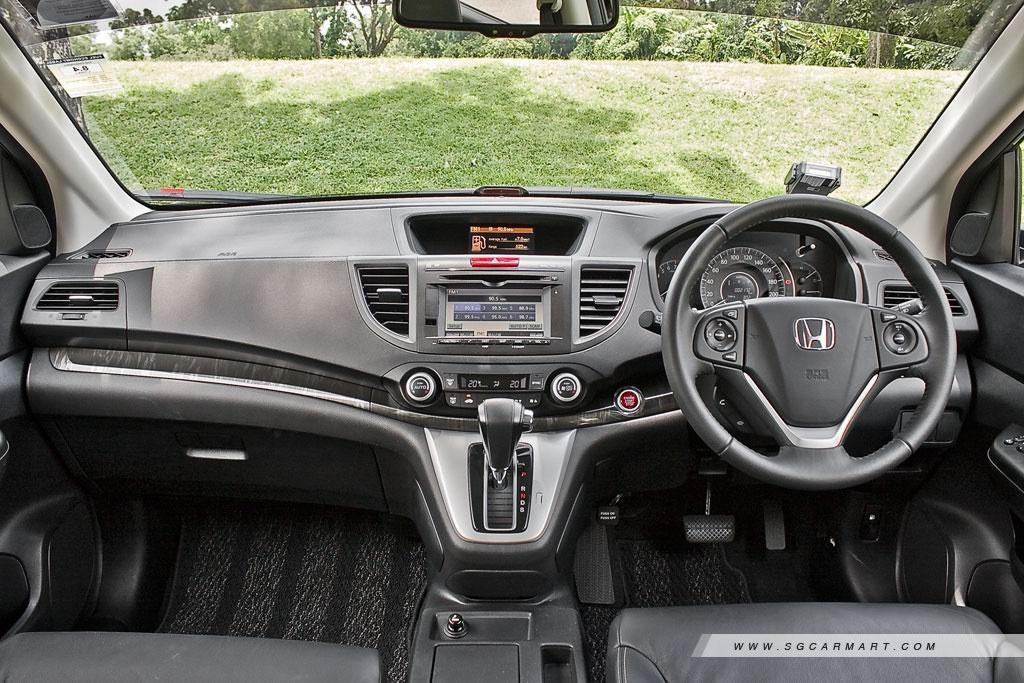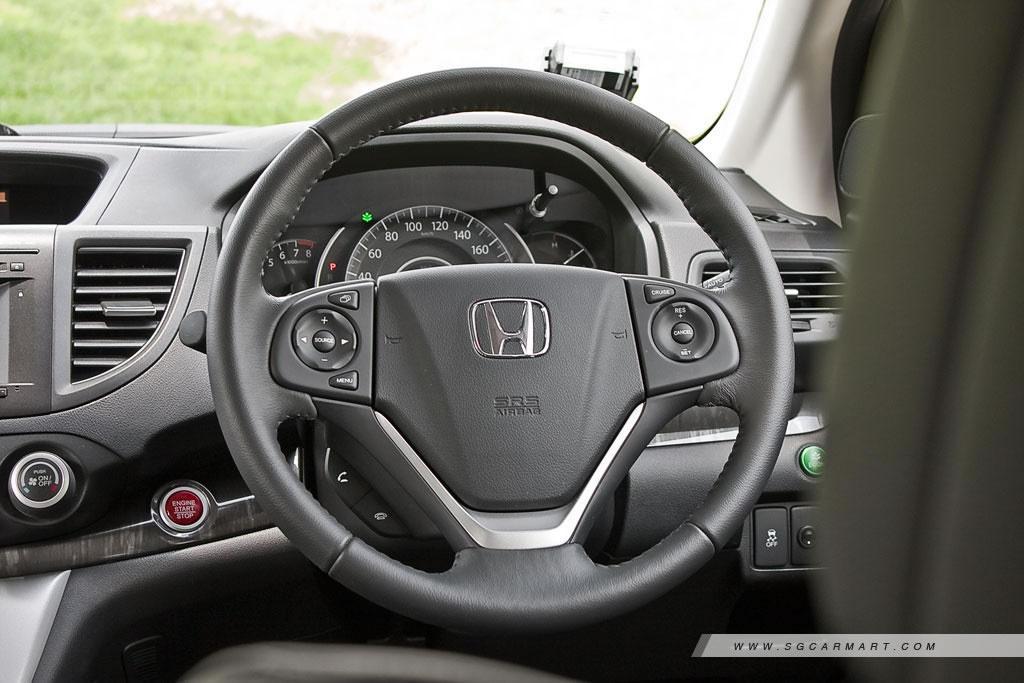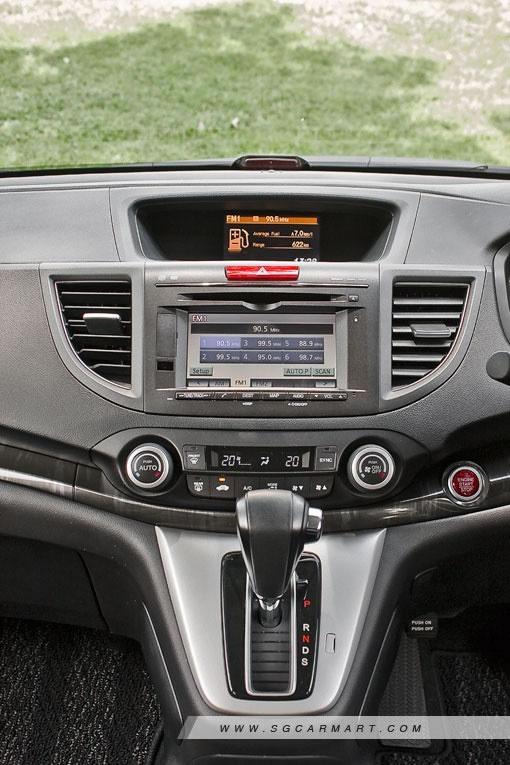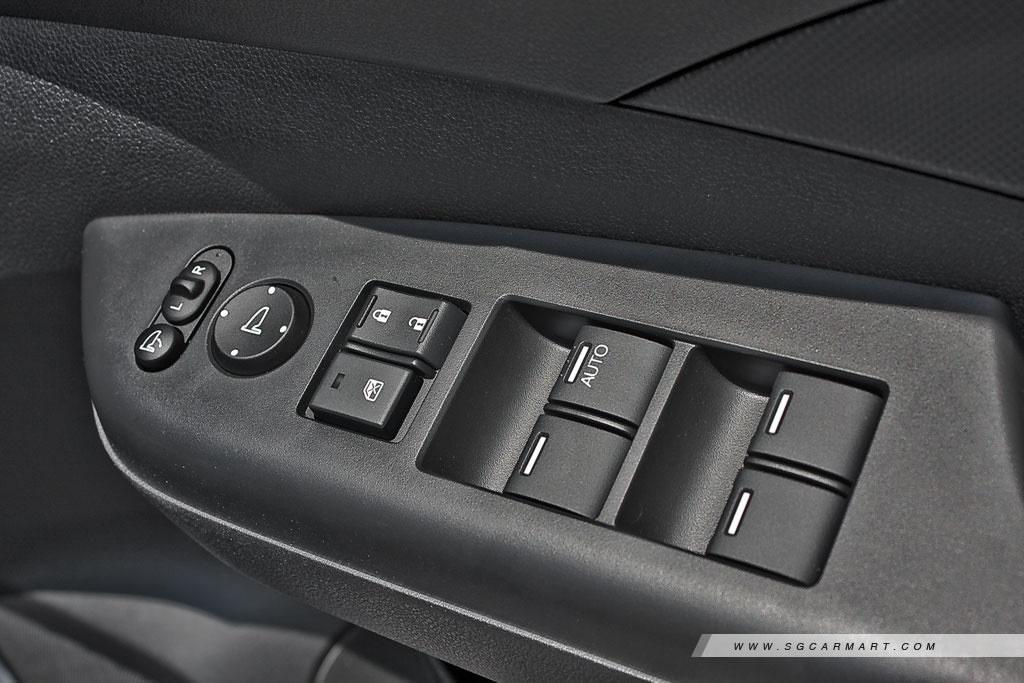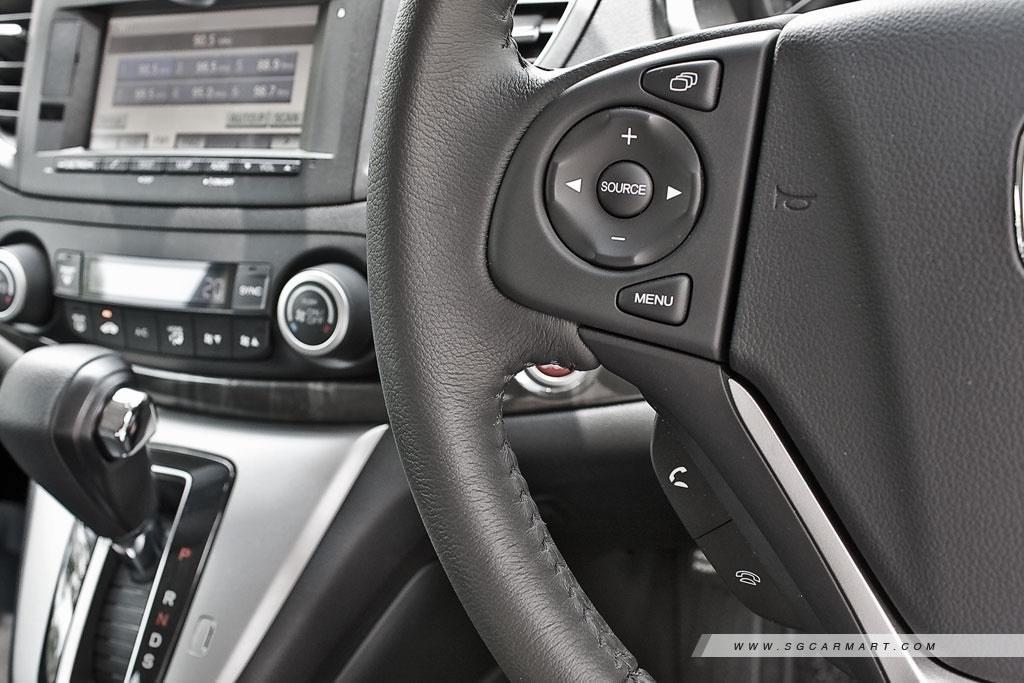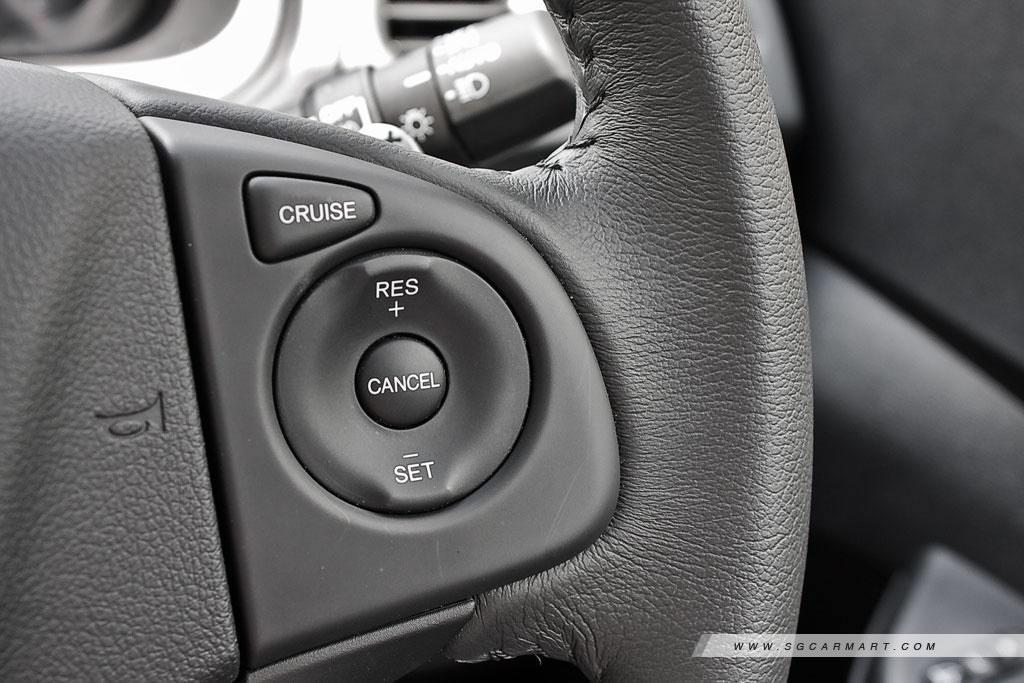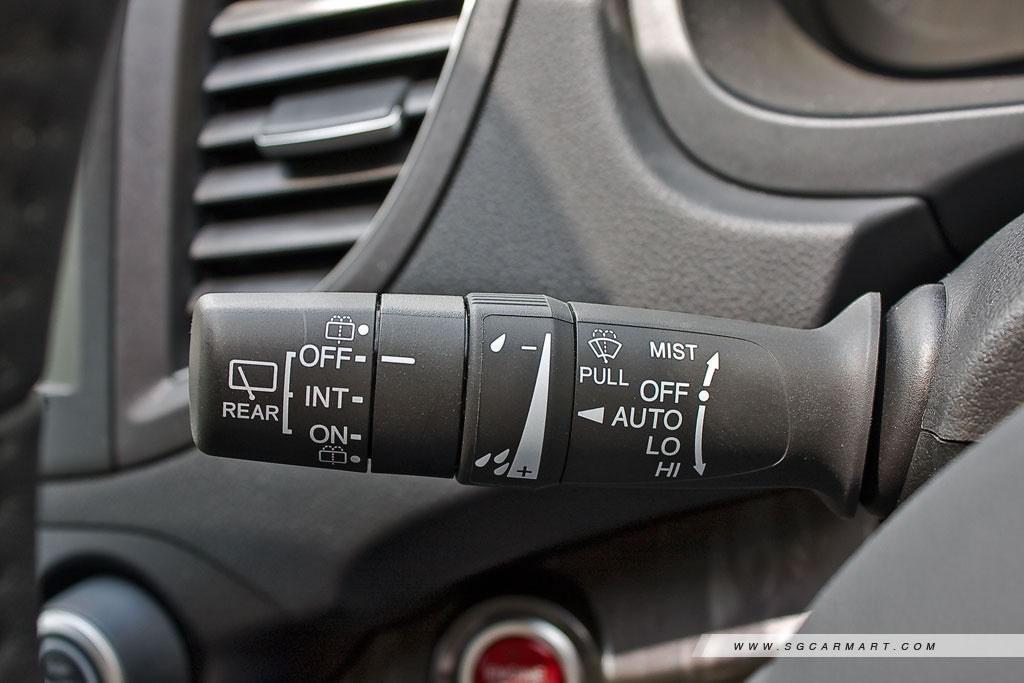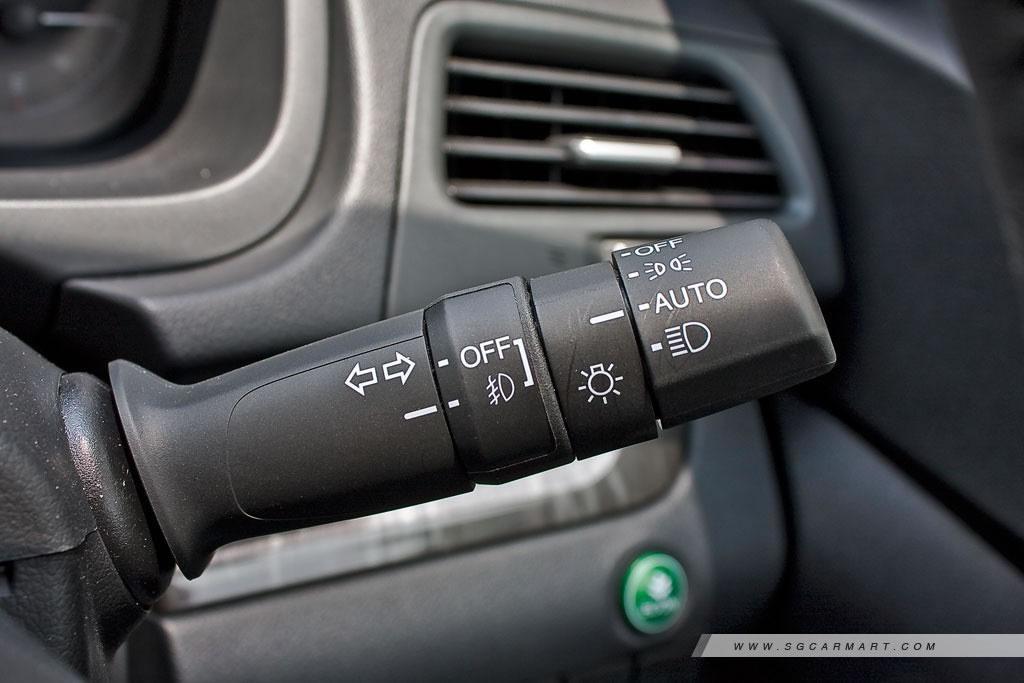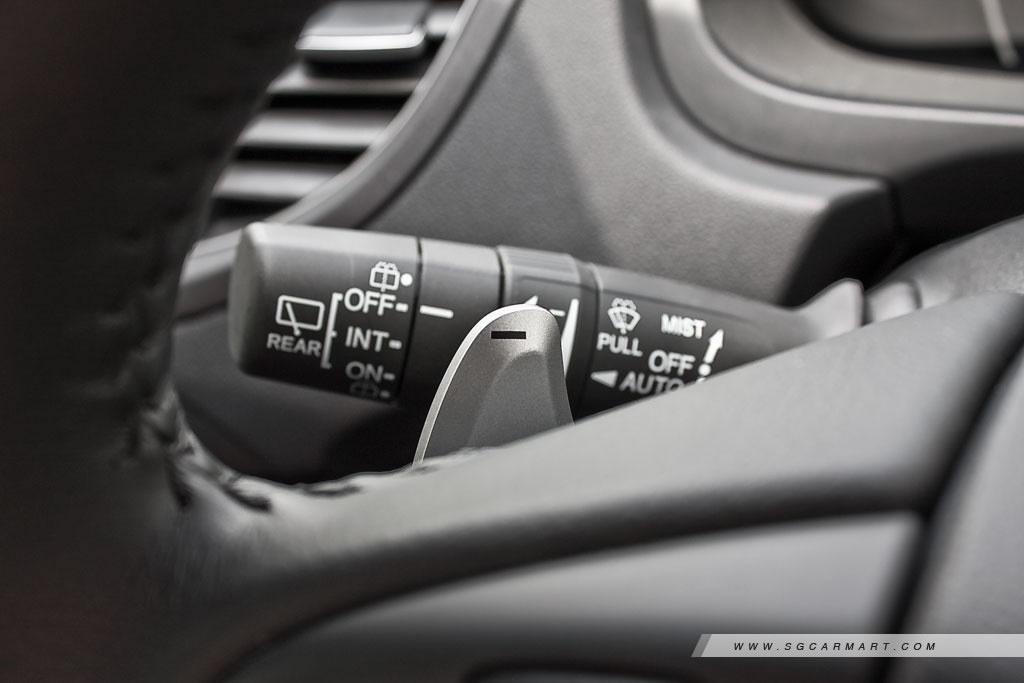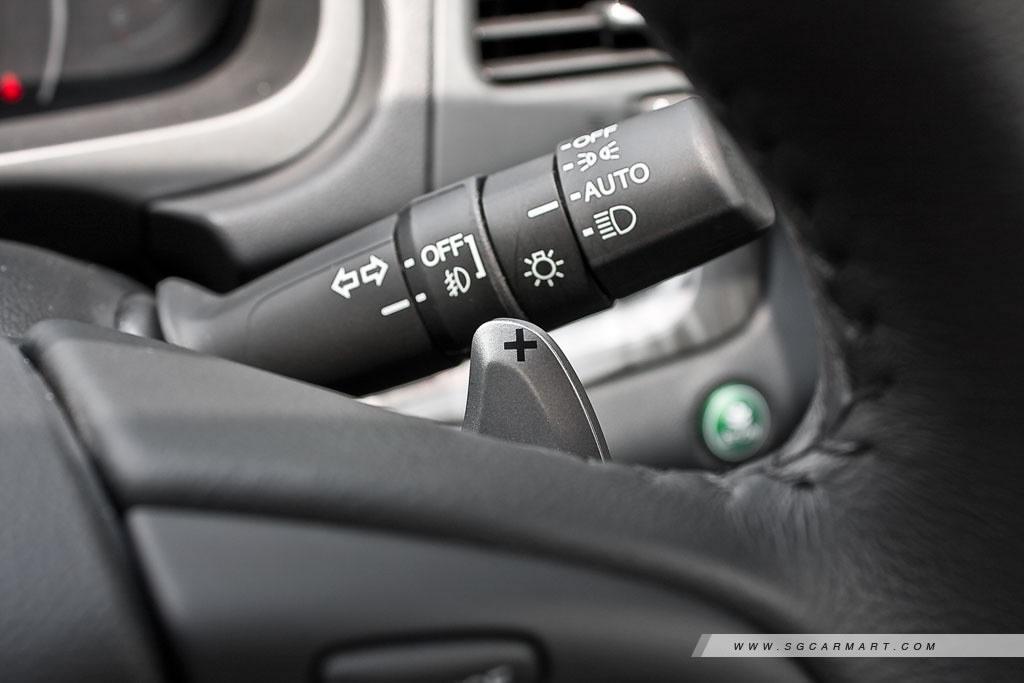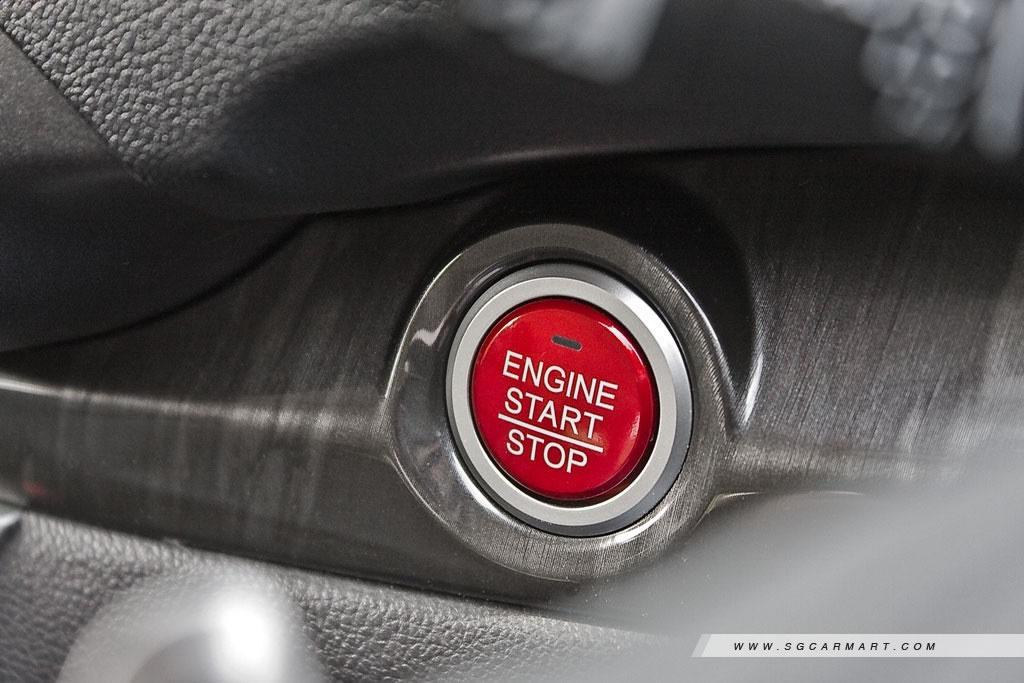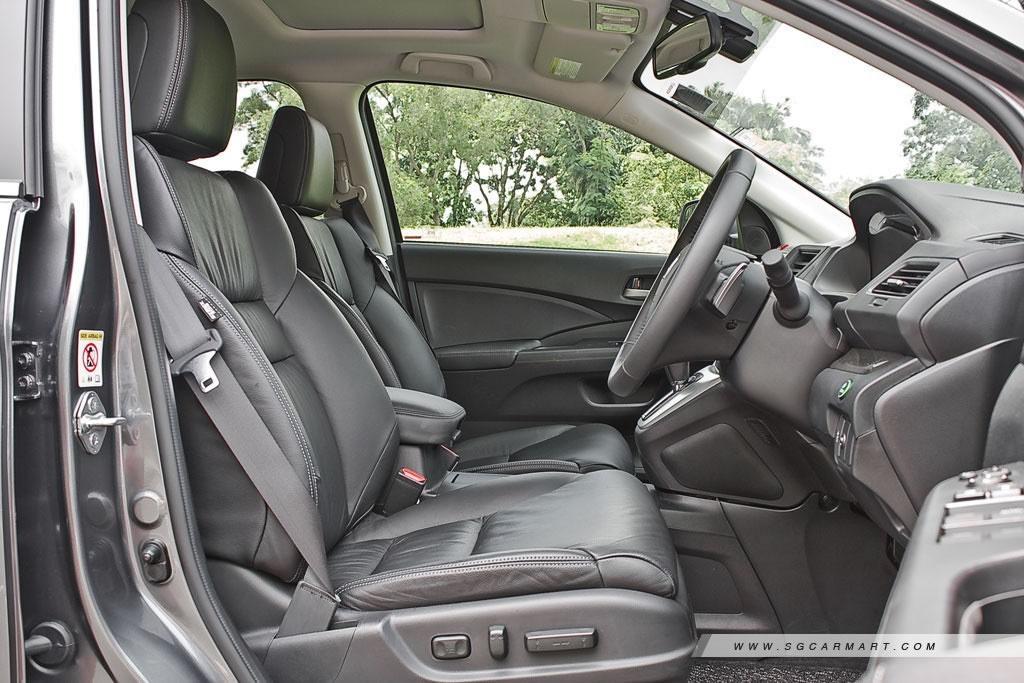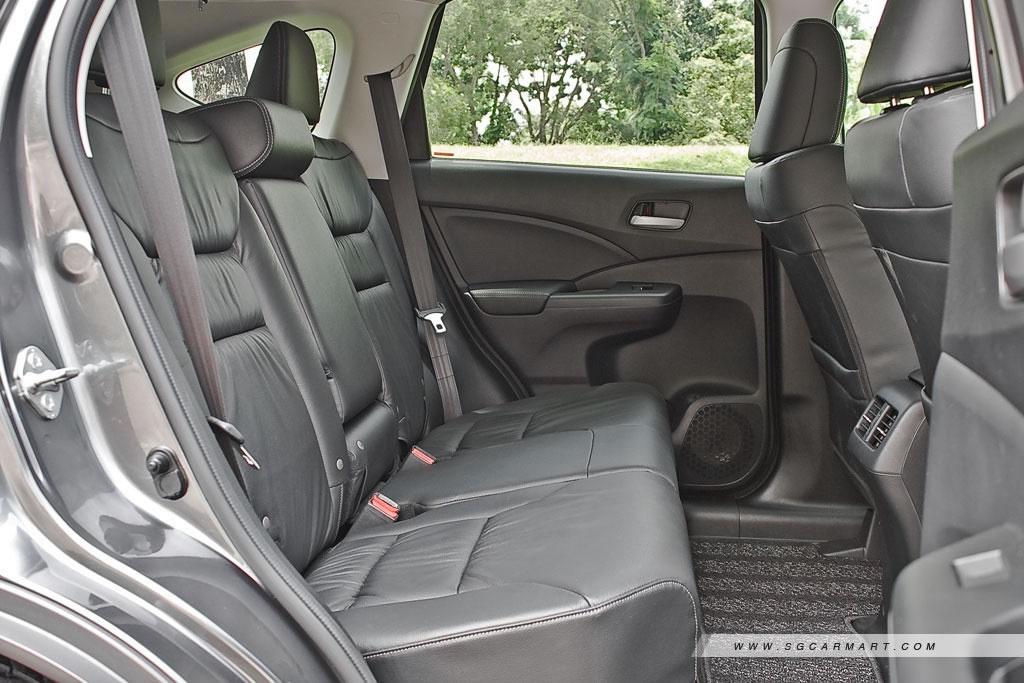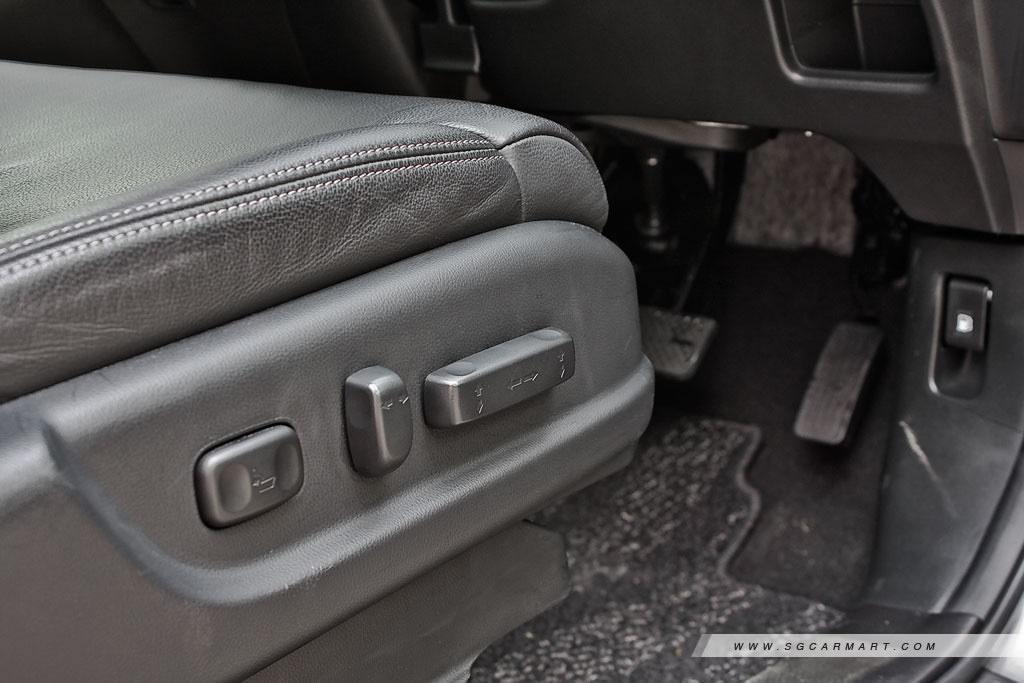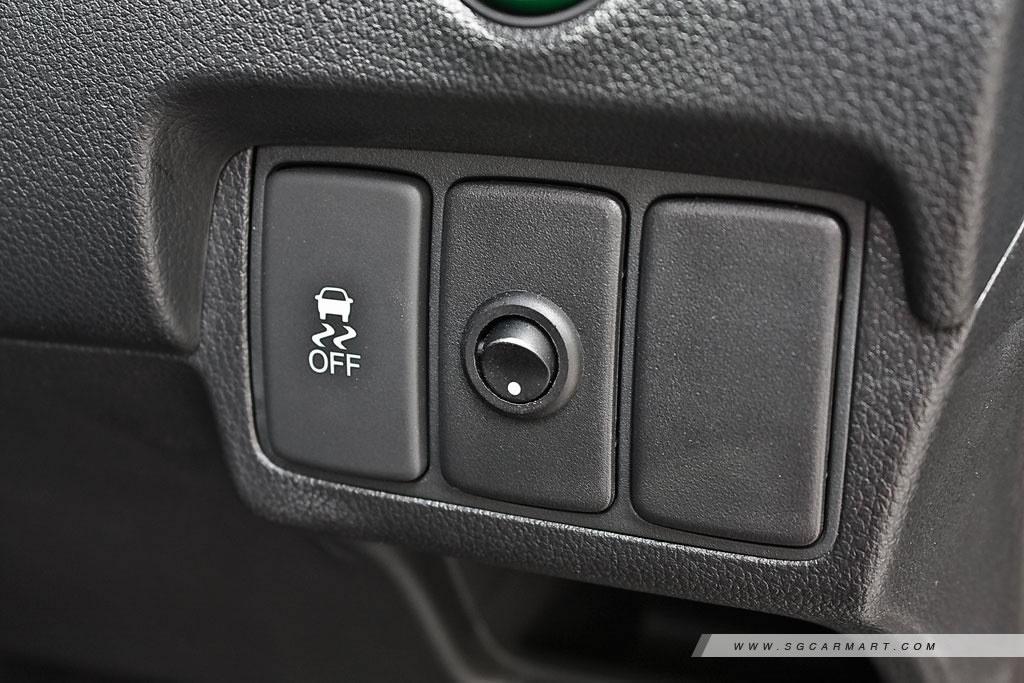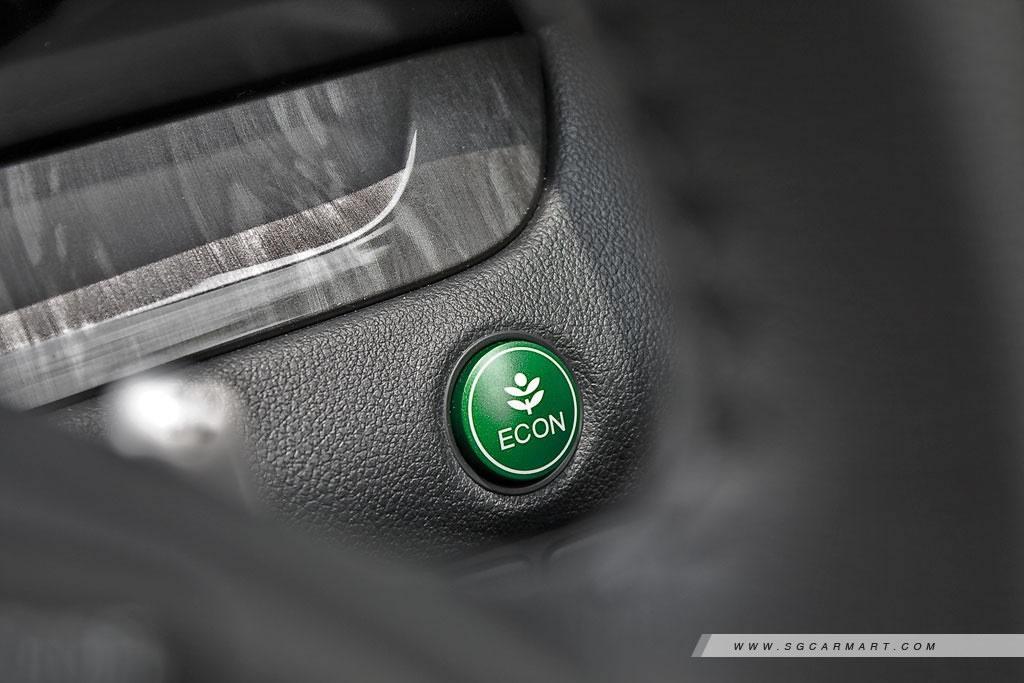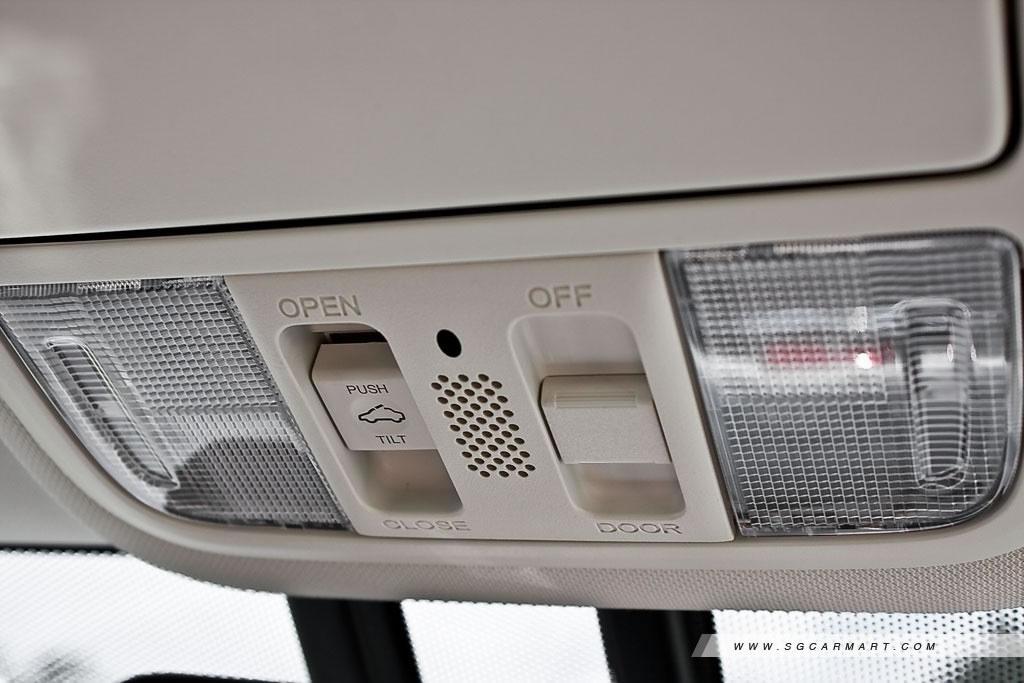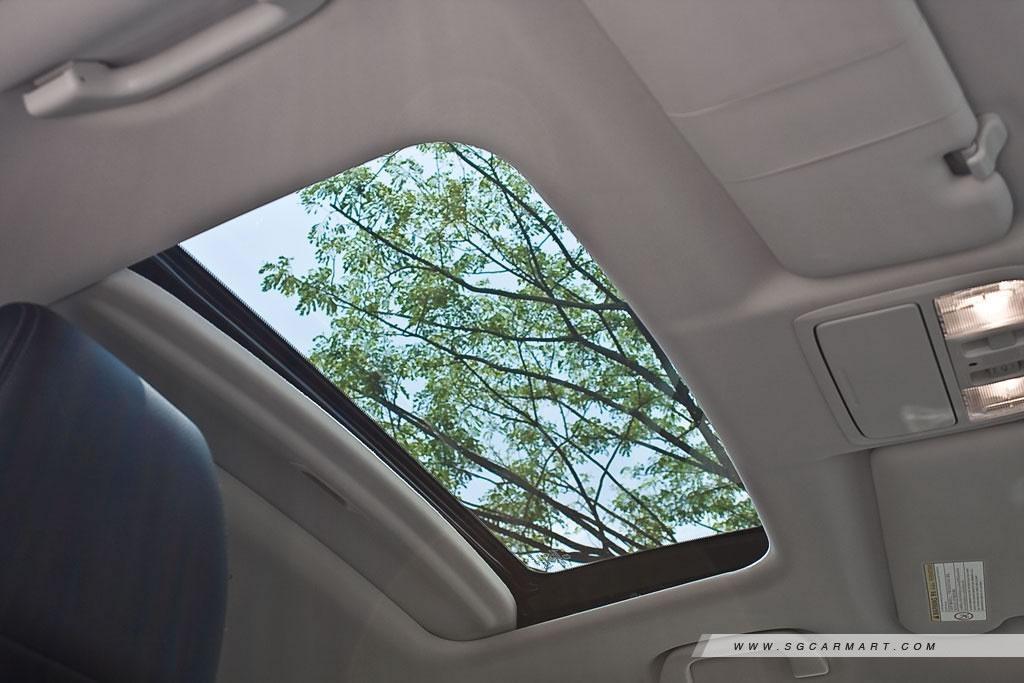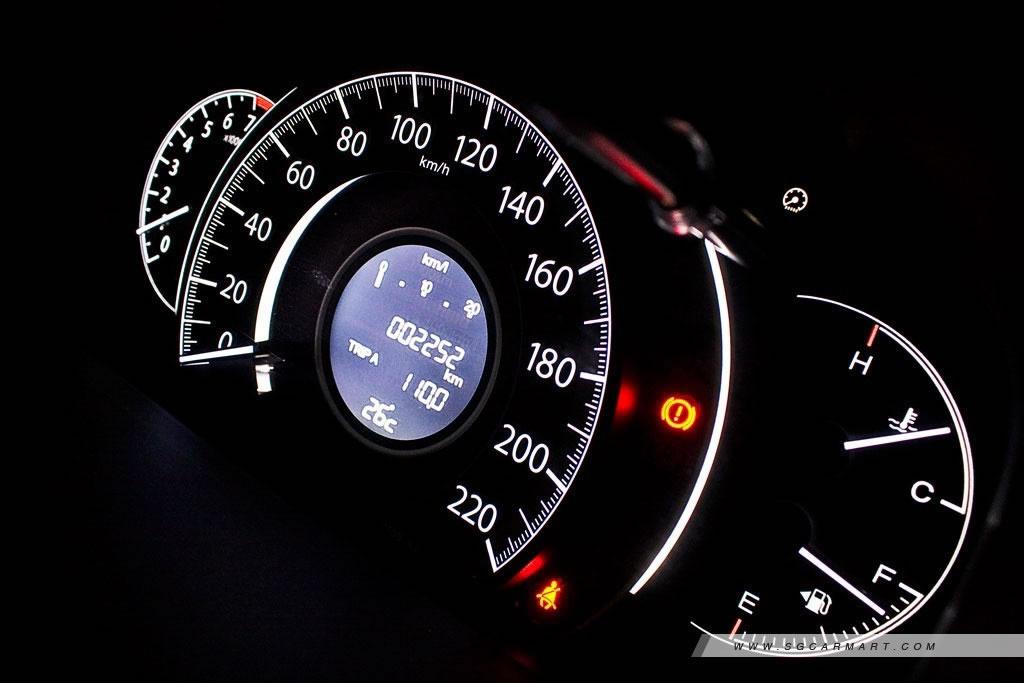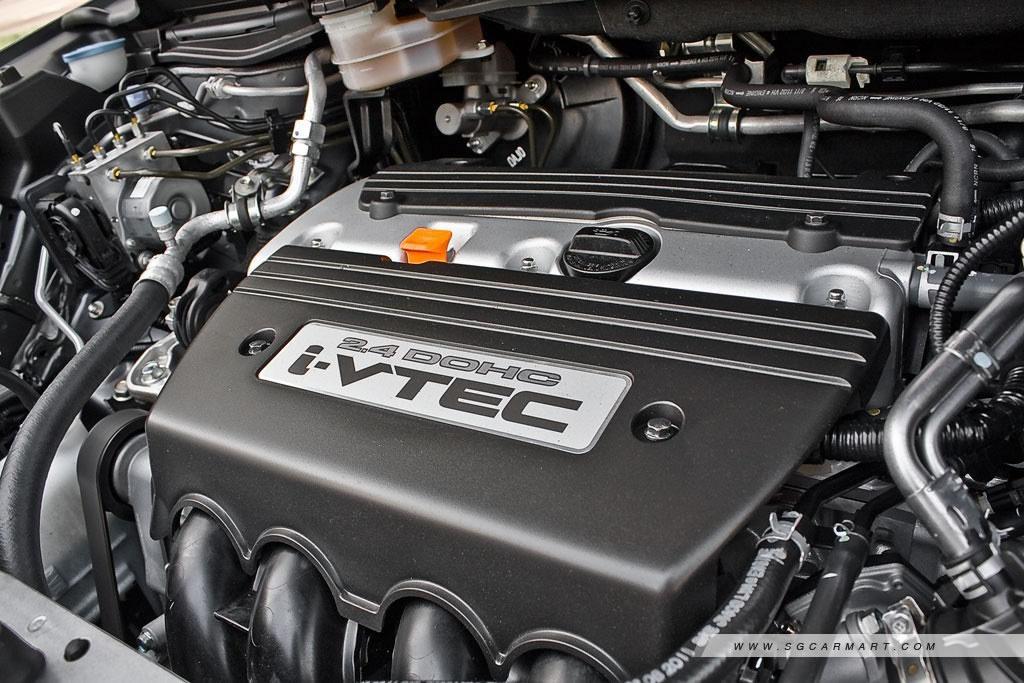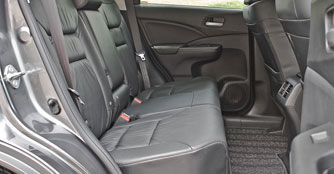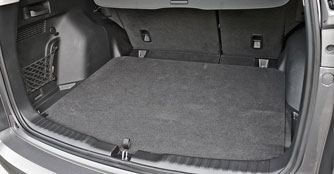Honda CR-V 2.4 Sunroof (A) Review
24 Apr 2012|41,336 views
Honda penned the CR-V in-house when the SUV was first created back in 1995. It was originally intended to be a niche vehicle which was no bad thing considering the rather unexciting design (notice how this isn't a pun?).
But things have changed over the years and much has improved, not just in terms of the CR-V's appearance but also its drivetrain. Proof of such can seen from the third generation SUV, which was launched sometime back in 2007 - the most common generation model that we've all seen on our sunny island.
No surprise then as the third generation CR-V was powered by the latest version of Honda's standard K-series 2.4-litre inline-four engine, which can also be found in the current-generation Honda Accord. As a result, the brand sold over 2,400 units in its five-year lifespan, making the SUV one of the toughest competitors the Toyota Rav4 and Subaru Forester have seen.
Exterior
Visually, the Honda CR-V bears the same corporate face as its recently launched smaller siblings. Although the car is far from exciting, the three-grille bar upfront is simpler and more pleasant to look at. While new generations of cars usually realise designs being sharper round the edges, the CR-V appears a little rounder and humbler on first glance.
SUVs of late have been designed to appear funkier, bolder and perhaps even fresher (think Evoque and CX-5) and the latest model in Honda's arsenal begs the question if it's in danger of being left behind the competitive crowd. Still, we reckon the target audience and fans of the CR-V will be screaming yay instead of nay, thanks to the evolutionary changes on its sheet metal.
But things have changed over the years and much has improved, not just in terms of the CR-V's appearance but also its drivetrain. Proof of such can seen from the third generation SUV, which was launched sometime back in 2007 - the most common generation model that we've all seen on our sunny island.
No surprise then as the third generation CR-V was powered by the latest version of Honda's standard K-series 2.4-litre inline-four engine, which can also be found in the current-generation Honda Accord. As a result, the brand sold over 2,400 units in its five-year lifespan, making the SUV one of the toughest competitors the Toyota Rav4 and Subaru Forester have seen.
Exterior
Visually, the Honda CR-V bears the same corporate face as its recently launched smaller siblings. Although the car is far from exciting, the three-grille bar upfront is simpler and more pleasant to look at. While new generations of cars usually realise designs being sharper round the edges, the CR-V appears a little rounder and humbler on first glance.
SUVs of late have been designed to appear funkier, bolder and perhaps even fresher (think Evoque and CX-5) and the latest model in Honda's arsenal begs the question if it's in danger of being left behind the competitive crowd. Still, we reckon the target audience and fans of the CR-V will be screaming yay instead of nay, thanks to the evolutionary changes on its sheet metal.
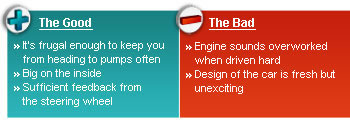 |
Gone is the awkward front double-grille with a slightly slanted chin and droopy hunched rear end. Although there isn't any push in terms of design boundaries, the machine now looks the part. Taillights are now wider and bolder, with a sharply raked profile that has a decidedly friendly Volvo-esque appearance while headlamps have been tautly pulled from grille to fenders.
Squatting at 4550 x 1820 x 1685 (L x W x H), the CR-V's dimensions have been trimmed a little but the higher bonnet line and the slightly larger windscreen certainly makes the SUV appear bigger and perhaps bulkier than its predecessor.
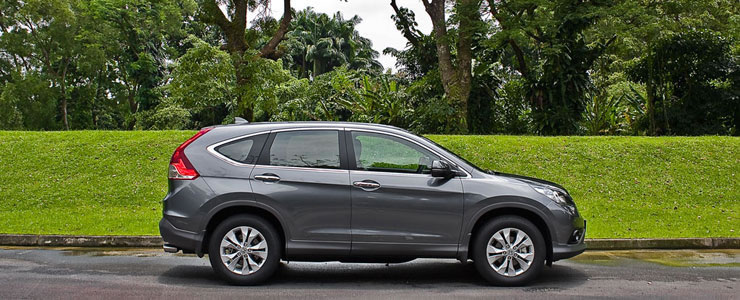 |
Interior
The cabin is where the SUV excels. It has to be Honda's engineering mastery that places it on top of its game. Despite its slightly smaller measurements, cabin of the CR-V is generously spaced out, giving five occupants sufficient head and legroom.
Boot space stands at an outstanding figure of 589 litres and increases by a notch to 2,008 litres with the seats knocked down. But what's impressive is the ease of knocking rear benches down. Flip a cache and you're ready to load your bicycle and a couple of picnic bags and baskets.
The cabin is where the SUV excels. It has to be Honda's engineering mastery that places it on top of its game. Despite its slightly smaller measurements, cabin of the CR-V is generously spaced out, giving five occupants sufficient head and legroom.
Boot space stands at an outstanding figure of 589 litres and increases by a notch to 2,008 litres with the seats knocked down. But what's impressive is the ease of knocking rear benches down. Flip a cache and you're ready to load your bicycle and a couple of picnic bags and baskets.
While it's rather plasticky, the cabin commands a blend of comfort and convenience, thanks to the intuitive but unfortunately dated-looking 5-inch Multi-information Display and the controls on the steering wheel. The instrument panel has also been simplified, avoiding the latest Civic's footsteps of glowing blue gadgetry appearance.
Apart from that, the cabin of the CR-V will provide occupants with a strong sense of security. Unlike some of its peers, the SUV's build quality is vault-like and will be happy to potter occupants from point to point in an impregnable manner.
Apart from that, the cabin of the CR-V will provide occupants with a strong sense of security. Unlike some of its peers, the SUV's build quality is vault-like and will be happy to potter occupants from point to point in an impregnable manner.
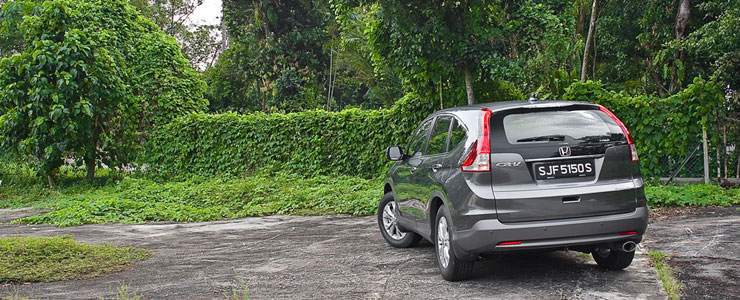 |
The Drive
Available in both 2.0-litre as well 2.4-litre powerplants, the more powerful variant tested here will churn out a maximum of 190 horses and 222Nm of torque to the front wheels in a measured manner, taking the CR-V up to the 100km/h mark in 10 seconds flat. Considering that the SUV weighs no less than 1.5 tonnes, it's quite a feat.
Although the four pot engine is not going to burn the road from a stop and does make a fair bit of rattle when extended, it certainly holds its own against competing engines, with absolutely no signs of hesitation or underpower from midrange. And with gears changing smoothly and promptly between one another, the CR-V is one manoeuvrable car-like SUV that's reasonably fun to pilot.
Of course, with its height peaking at over 1.6 metres, the car is no stranger to the law of physics. But on the plus side, the steering is sharp and communicative around bends, allowing the driver to command directional changes with ease.
Available in both 2.0-litre as well 2.4-litre powerplants, the more powerful variant tested here will churn out a maximum of 190 horses and 222Nm of torque to the front wheels in a measured manner, taking the CR-V up to the 100km/h mark in 10 seconds flat. Considering that the SUV weighs no less than 1.5 tonnes, it's quite a feat.
Although the four pot engine is not going to burn the road from a stop and does make a fair bit of rattle when extended, it certainly holds its own against competing engines, with absolutely no signs of hesitation or underpower from midrange. And with gears changing smoothly and promptly between one another, the CR-V is one manoeuvrable car-like SUV that's reasonably fun to pilot.
Of course, with its height peaking at over 1.6 metres, the car is no stranger to the law of physics. But on the plus side, the steering is sharp and communicative around bends, allowing the driver to command directional changes with ease.
The Honda CR-V may not be your sporty SUV but it does avoid the need to feel erratic at all times. It may be best driven around town but it won't disappoint during high-speed manoeuvres on expressways.
Conclusion
Although we weren't able to meet the 11.9km/L as stated on paper, we managed to draw out 10.2km/L without even trying to be light-footed. Perhaps at times like these when petrol prices are slowly but steadily heading north, considering a frugal and practical choice of ride is important.
With a price tag of $192,900 (as of 5th April 2012), the latest Honda CR-V is definitely worth looking into - whether you're just toying with the thought or looking for a machine to suit your daily needs.
Conclusion
Although we weren't able to meet the 11.9km/L as stated on paper, we managed to draw out 10.2km/L without even trying to be light-footed. Perhaps at times like these when petrol prices are slowly but steadily heading north, considering a frugal and practical choice of ride is important.
With a price tag of $192,900 (as of 5th April 2012), the latest Honda CR-V is definitely worth looking into - whether you're just toying with the thought or looking for a machine to suit your daily needs.
Honda penned the CR-V in-house when the SUV was first created back in 1995. It was originally intended to be a niche vehicle which was no bad thing considering the rather unexciting design (notice how this isn't a pun?).
But things have changed over the years and much has improved, not just in terms of the CR-V's appearance but also its drivetrain. Proof of such can seen from the third generation SUV, which was launched sometime back in 2007 - the most common generation model that we've all seen on our sunny island.
No surprise then as the third generation CR-V was powered by the latest version of Honda's standard K-series 2.4-litre inline-four engine, which can also be found in the current-generation Honda Accord. As a result, the brand sold over 2,400 units in its five-year lifespan, making the SUV one of the toughest competitors the Toyota Rav4 and Subaru Forester have seen.
Exterior
Visually, the Honda CR-V bears the same corporate face as its recently launched smaller siblings. Although the car is far from exciting, the three-grille bar upfront is simpler and more pleasant to look at. While new generations of cars usually realise designs being sharper round the edges, the CR-V appears a little rounder and humbler on first glance.
SUVs of late have been designed to appear funkier, bolder and perhaps even fresher (think Evoque and CX-5) and the latest model in Honda's arsenal begs the question if it's in danger of being left behind the competitive crowd. Still, we reckon the target audience and fans of the CR-V will be screaming yay instead of nay, thanks to the evolutionary changes on its sheet metal.
But things have changed over the years and much has improved, not just in terms of the CR-V's appearance but also its drivetrain. Proof of such can seen from the third generation SUV, which was launched sometime back in 2007 - the most common generation model that we've all seen on our sunny island.
No surprise then as the third generation CR-V was powered by the latest version of Honda's standard K-series 2.4-litre inline-four engine, which can also be found in the current-generation Honda Accord. As a result, the brand sold over 2,400 units in its five-year lifespan, making the SUV one of the toughest competitors the Toyota Rav4 and Subaru Forester have seen.
Exterior
Visually, the Honda CR-V bears the same corporate face as its recently launched smaller siblings. Although the car is far from exciting, the three-grille bar upfront is simpler and more pleasant to look at. While new generations of cars usually realise designs being sharper round the edges, the CR-V appears a little rounder and humbler on first glance.
SUVs of late have been designed to appear funkier, bolder and perhaps even fresher (think Evoque and CX-5) and the latest model in Honda's arsenal begs the question if it's in danger of being left behind the competitive crowd. Still, we reckon the target audience and fans of the CR-V will be screaming yay instead of nay, thanks to the evolutionary changes on its sheet metal.
 |
Gone is the awkward front double-grille with a slightly slanted chin and droopy hunched rear end. Although there isn't any push in terms of design boundaries, the machine now looks the part. Taillights are now wider and bolder, with a sharply raked profile that has a decidedly friendly Volvo-esque appearance while headlamps have been tautly pulled from grille to fenders.
Squatting at 4550 x 1820 x 1685 (L x W x H), the CR-V's dimensions have been trimmed a little but the higher bonnet line and the slightly larger windscreen certainly makes the SUV appear bigger and perhaps bulkier than its predecessor.
 |
Interior
The cabin is where the SUV excels. It has to be Honda's engineering mastery that places it on top of its game. Despite its slightly smaller measurements, cabin of the CR-V is generously spaced out, giving five occupants sufficient head and legroom.
Boot space stands at an outstanding figure of 589 litres and increases by a notch to 2,008 litres with the seats knocked down. But what's impressive is the ease of knocking rear benches down. Flip a cache and you're ready to load your bicycle and a couple of picnic bags and baskets.
The cabin is where the SUV excels. It has to be Honda's engineering mastery that places it on top of its game. Despite its slightly smaller measurements, cabin of the CR-V is generously spaced out, giving five occupants sufficient head and legroom.
Boot space stands at an outstanding figure of 589 litres and increases by a notch to 2,008 litres with the seats knocked down. But what's impressive is the ease of knocking rear benches down. Flip a cache and you're ready to load your bicycle and a couple of picnic bags and baskets.
While it's rather plasticky, the cabin commands a blend of comfort and convenience, thanks to the intuitive but unfortunately dated-looking 5-inch Multi-information Display and the controls on the steering wheel. The instrument panel has also been simplified, avoiding the latest Civic's footsteps of glowing blue gadgetry appearance.
Apart from that, the cabin of the CR-V will provide occupants with a strong sense of security. Unlike some of its peers, the SUV's build quality is vault-like and will be happy to potter occupants from point to point in an impregnable manner.
Apart from that, the cabin of the CR-V will provide occupants with a strong sense of security. Unlike some of its peers, the SUV's build quality is vault-like and will be happy to potter occupants from point to point in an impregnable manner.
 |
The Drive
Available in both 2.0-litre as well 2.4-litre powerplants, the more powerful variant tested here will churn out a maximum of 190 horses and 222Nm of torque to the front wheels in a measured manner, taking the CR-V up to the 100km/h mark in 10 seconds flat. Considering that the SUV weighs no less than 1.5 tonnes, it's quite a feat.
Although the four pot engine is not going to burn the road from a stop and does make a fair bit of rattle when extended, it certainly holds its own against competing engines, with absolutely no signs of hesitation or underpower from midrange. And with gears changing smoothly and promptly between one another, the CR-V is one manoeuvrable car-like SUV that's reasonably fun to pilot.
Of course, with its height peaking at over 1.6 metres, the car is no stranger to the law of physics. But on the plus side, the steering is sharp and communicative around bends, allowing the driver to command directional changes with ease.
Available in both 2.0-litre as well 2.4-litre powerplants, the more powerful variant tested here will churn out a maximum of 190 horses and 222Nm of torque to the front wheels in a measured manner, taking the CR-V up to the 100km/h mark in 10 seconds flat. Considering that the SUV weighs no less than 1.5 tonnes, it's quite a feat.
Although the four pot engine is not going to burn the road from a stop and does make a fair bit of rattle when extended, it certainly holds its own against competing engines, with absolutely no signs of hesitation or underpower from midrange. And with gears changing smoothly and promptly between one another, the CR-V is one manoeuvrable car-like SUV that's reasonably fun to pilot.
Of course, with its height peaking at over 1.6 metres, the car is no stranger to the law of physics. But on the plus side, the steering is sharp and communicative around bends, allowing the driver to command directional changes with ease.
The Honda CR-V may not be your sporty SUV but it does avoid the need to feel erratic at all times. It may be best driven around town but it won't disappoint during high-speed manoeuvres on expressways.
Conclusion
Although we weren't able to meet the 11.9km/L as stated on paper, we managed to draw out 10.2km/L without even trying to be light-footed. Perhaps at times like these when petrol prices are slowly but steadily heading north, considering a frugal and practical choice of ride is important.
With a price tag of $192,900 (as of 5th April 2012), the latest Honda CR-V is definitely worth looking into - whether you're just toying with the thought or looking for a machine to suit your daily needs.
Conclusion
Although we weren't able to meet the 11.9km/L as stated on paper, we managed to draw out 10.2km/L without even trying to be light-footed. Perhaps at times like these when petrol prices are slowly but steadily heading north, considering a frugal and practical choice of ride is important.
With a price tag of $192,900 (as of 5th April 2012), the latest Honda CR-V is definitely worth looking into - whether you're just toying with the thought or looking for a machine to suit your daily needs.
Also read our comparison article on:
Honda CR-V 2.0 (A) vs Kia Sportage 2.0 SX (A) vs Toyota RAV4 2.0 (A)Car Information
Honda CR-V 2.4 Sunroof (A)
CAT B|Petrol|11.9km/L
Horsepower
140kW (188 bhp)
Torque
222 Nm
Acceleration
10sec (0-100km /hr)
This model is no longer being sold by local distributor
All Used Honda CR-VThank You For Your Subscription.
